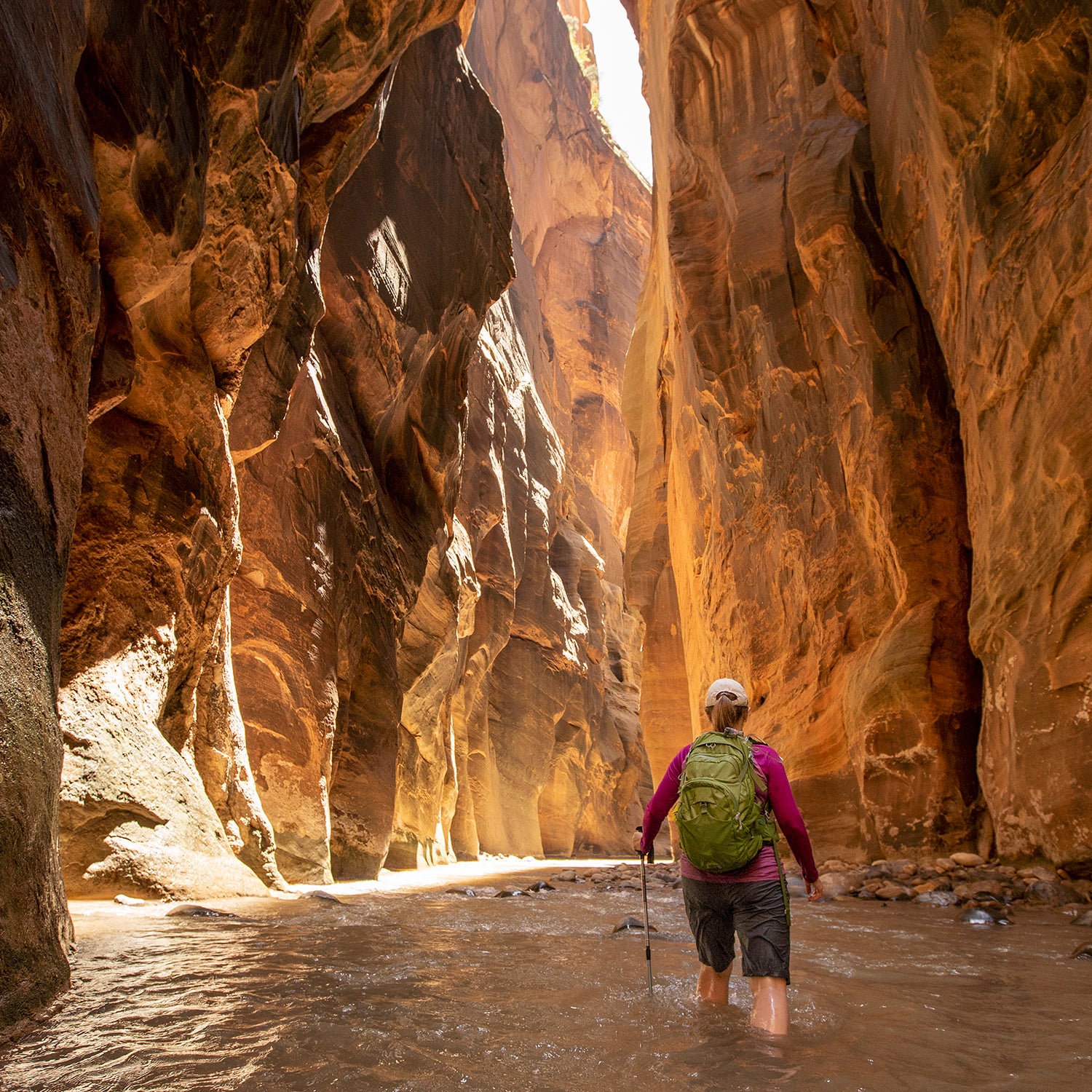The Zion Narrows is the most popular hike in one of most popular parks in the country. Only 90 people are allowed through all 16 miles each day, and permits to walk the slot canyon that cuts between 2,000-foot cliffs are booked months in advance. So at the end of September, when a park ranger reported finding No Trespassing notices posted and a For Sale sign that read, “880 Acres. With Water. Resort potential,” hikers and lovers of Southern Utah’s red rock landscapes were understandably panicked.
The Narrows begins at Chamberlain Ranch, a few miles northeast of the Zion National Park boundaries. But as the route enters Simon Gulch, at the edge of the park, it passes through a mile of private property owned for 50 years by the same family—a family that, it would seem, suddenly wants to sell. “We didn’t have a heads-up from the landowner or a reason,” Cindy Purcell, the management assistant at Zion Las Vegas Review Journal after news of the closure spread.
After the signs went up, on September 25 the National Park Service stopped issuing permits for the full Narrows hike. And because the waiting list was already booked through early November, it meant anyone who’d scheduled a trip could also be turned away. Thankfully, the park service and the county reached a temporary deal with the owner, Scott Bulloch, so the trail is safe until the end of the year.
It could be easy to think of the Bulloch family as greedy, or opportunists who wanted to cash in on a national treasure. But that’s not what happened. The Bullochs, in fact, want to see their land pass into the federal government’s hands. “We feel that property should belong to the public,” Scott Bulloch Salt Lake Tribune. They just can’t get a fair deal for it.
For the past three years the Bullochs have been trying to do just that, working with the Trust for Public Land, a San Francisco-based conservation group focused on access. The Trust’s Southwest area director, Jim Petterson, told �����ԹϺ��� the plan has always been to get the U.S. Forest Service to buy the 880 acres, or at the very least an easement to the Narrows, through its Forest Legacy Program, which is part of the Land and Water Conservation Fund.
Congress allowed the LWCF to lapse earlier this month. And while the death of the country’s most important conservation program could certainly doom similar access projects in the future, it doesn’t seem to have been the deciding factor in this case. Rather, it was the how much the feds can pay for land, that prevented a deal. When the appraisal the Trust commissioned was finished in June and submitted to the Forest Service shortly after—the results of which are secret—the Agency turned it down, presumably for being too expensive. “We want people to know we didn’t just walk away,” , the Forest Service’s Intermountain Region spokesman. “We want this access for the American people.”
So after years of negotiating, when the deal stalled out at the end of last month the Bullochs posted their signs.
You could chalk it up to a unique circumstance of governmental bureaucracy: the owners want to sell, plenty of hikers and voters want the land, and the Forest Service, it would seem, is hogtied by shortsighted rulemakers in Washington D.C. Except, as Petterson points out, these circumstances aren't so rare.
In most cases, these land deals depend on the LWCF, which uses oil and gas revenues to build parks, improve public lands, and buy back access from private owners. But now that the LWCF has lapsed, projects like this won’t get the funds they need. In Zion alone there are 3,000 acres of private inholdings, much of it settled before the area was designated a park. Some of that land is also key to accessing the area’s most iconic places, like the Orderville and Parunuweap canyons. The Narrows was also at risk five years ago when a developer wanted to build ranchettes near the Chamberlain Ranch trailhead. Before that could happen the Trust brokered a deal between the federal government, Utah, and another conservation group to pay to keep the Narrows open to hikers.
Peterson says they’ve already commissioned a new appraisal for the Bulloch’s property, and that because the deal was already in the works before the LWCF expired, it should be okay—from a funding standpoint. Of course, the Forest Service could still turn down the new estimate. If that happens, Petterson says, “The worst case scenario is that the landowner could sell on the open market and the next owner might decide to close off access to the Narrows.”


